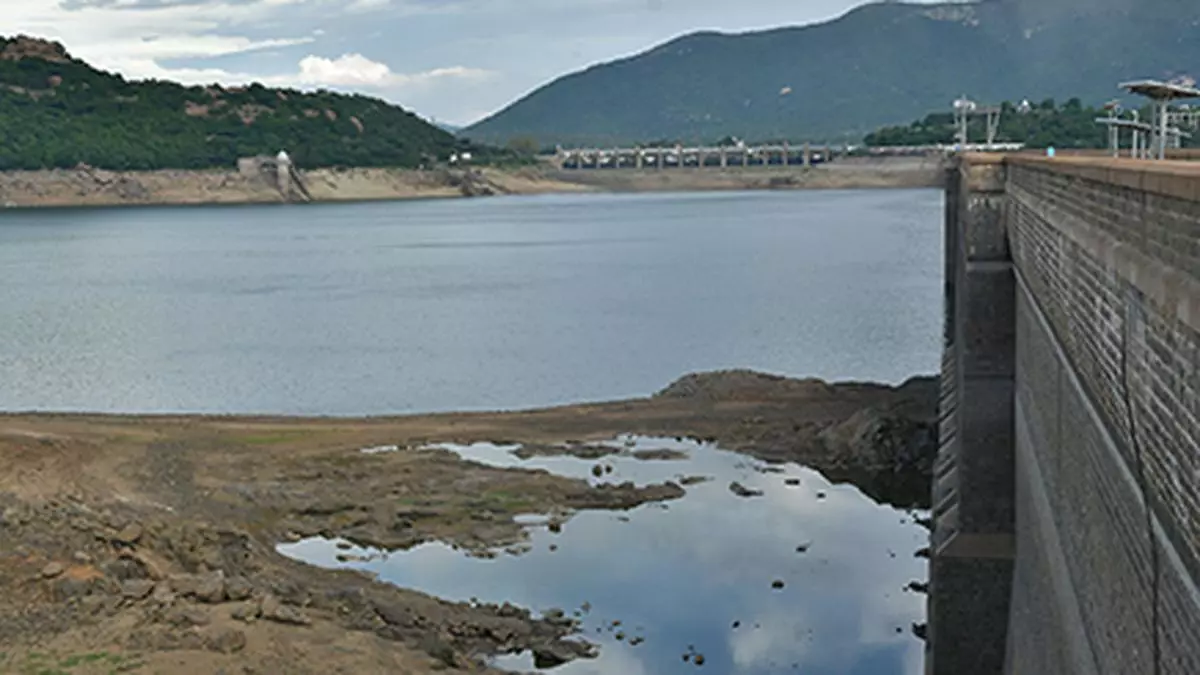Storage in 5/6th of Indian reservoirs below 50% of capacity
Only one out of every six reservoirs in India has a storage level higher than 50 per cent of the capacity this week, data from the Central Water Commission (CWC) showed.
At least seven reservoirs – six of them in the South – have gone dry even as the storage level in the 150 major reservoirs in the country dropped to 31 per cent of the capacity with the situation in the southern region turning bad from worse.
India’s water storage has been primarily been affected by El Nino, which emerged in June 2023 resulting in deficient rainfall in at least 50 per cent of the country. On Tuesday, Australia’s Bureau of Meteorology announced the end of El Nino, which causes drought and prolonged dry periods in Asia.
AP situation worsens
According to CWC’s weekly bulletin on live storage status of the 150 reservoirs, the level was 56.085 billion cubic metres (BCM) of the 178.784 capacity. The level in 126 or five-sixths of these was below 50 per cent.
The situation further aggravated in Andhra Pradesh, where the storage dropped to seven per cent of capacity, while in the reservoirs it shares with Telangana the level was eight per cent.
The Yeluru reservoir has gone dry as also the Nagarjuna Sagar, from where water is shared with Telangana. The level in Somasila in Andhra Pradesh is a critical 1 per cent of the capacity.
In Telangana, the Priyadarshini Jurala and Kaddam reservoirs have gone dry, while the Tattihalla in Karnataka and Aliyar in Tamil Nadu are down to zero.
The lower storage has been compounded by ground water level dropping in Andhra Pradesh and Telangana, affecting rabi padi, pulses and coarse cereals. It also portends ill for the zaid or summer crop, while kharif sowing could be delayed without any improvement in the storage.
Hope round the corner
There is, however, hope with the Australian weather agency predicting La Nina from July and the India Meteorological Department forecasting a higher than normal south-west monsoon this year.
In Andhra Pradesh, the storage is 81 per cent below normal, while in reservoirs that jointly irrigate Telangana and Andhra Pradesh, it was 37 per cent lower than usual. Tamil Nadu is another State where the storage is 44 per cent below normal, while it is 22 lower than usual in Karnataka.
Overall, the level in the 42 reservoirs in the South was 17 per cent of the 53.334 BCM capacity at 9.316 BCM.
Among other States facing problems, the level in Bihar is 88 per cent lower than usual, while it is 26 per cent below normal in Uttar Pradesh. Among the 32 reservoirs of Maharashtra, the Bhima (Ujjani) has gone dry, while overall the State reservoirs’ capacity is 15 per cent below normal.
Among other regions, the storage in the 10 reservoirs of the northern region was 32.5 per cent of the 19.663 BCM at 6.396 BCM. In the 23 reservoirs of the eastern region, the level was 40.6 per cent of 20.430 BCM at 8.292 BCM. The storage in West Bengal was 28 per cent lower than normal.
In the western region, the level was 33.9 per cent of the capacity and in the central region, the storage was 40 per cent.
